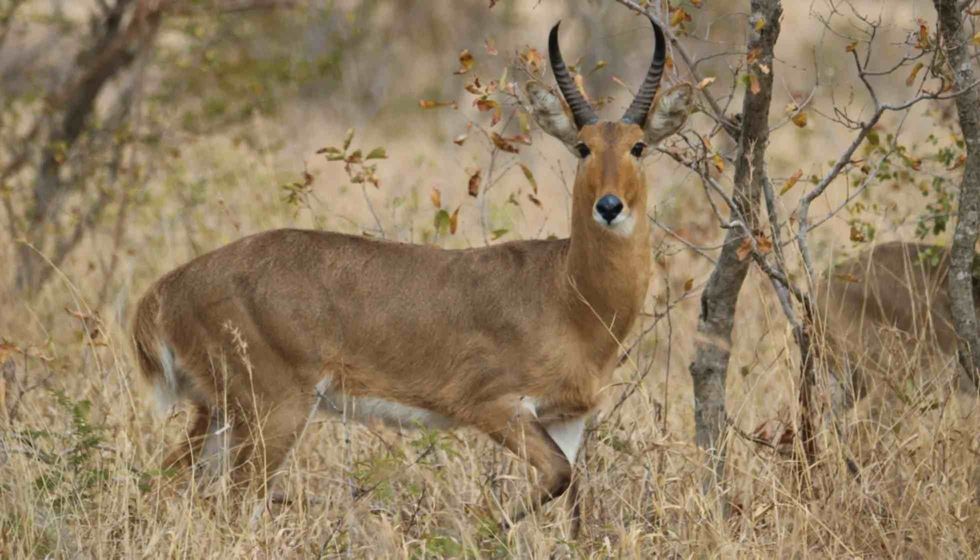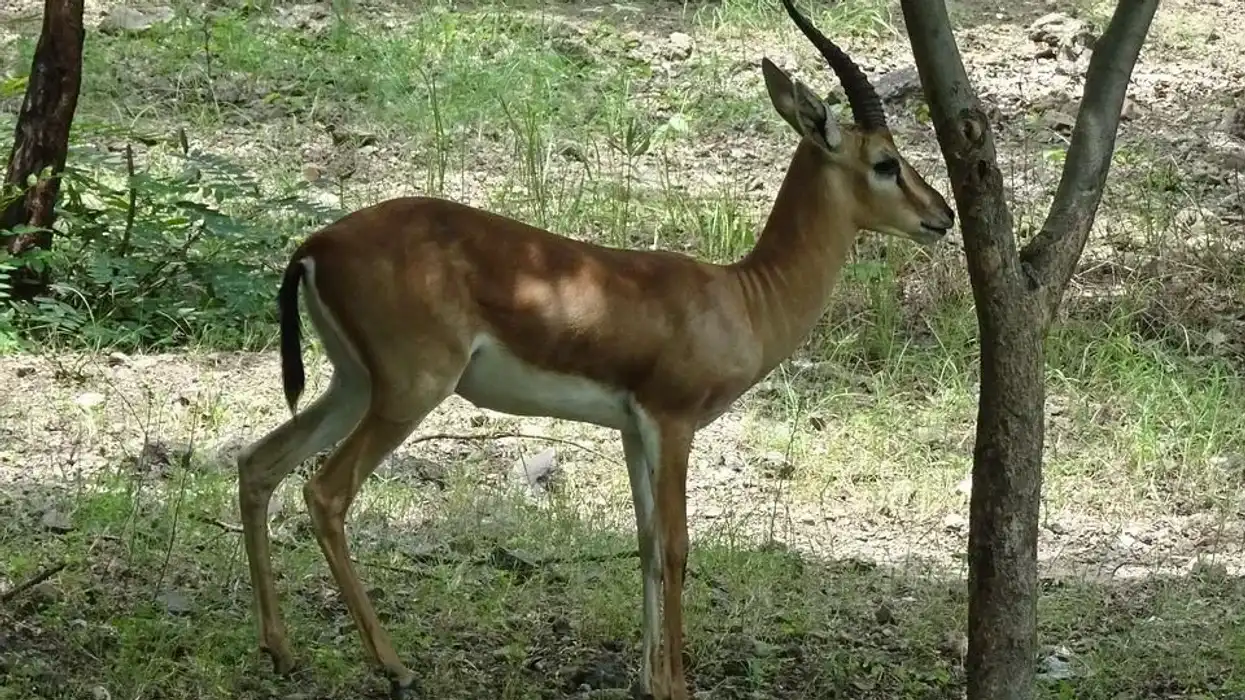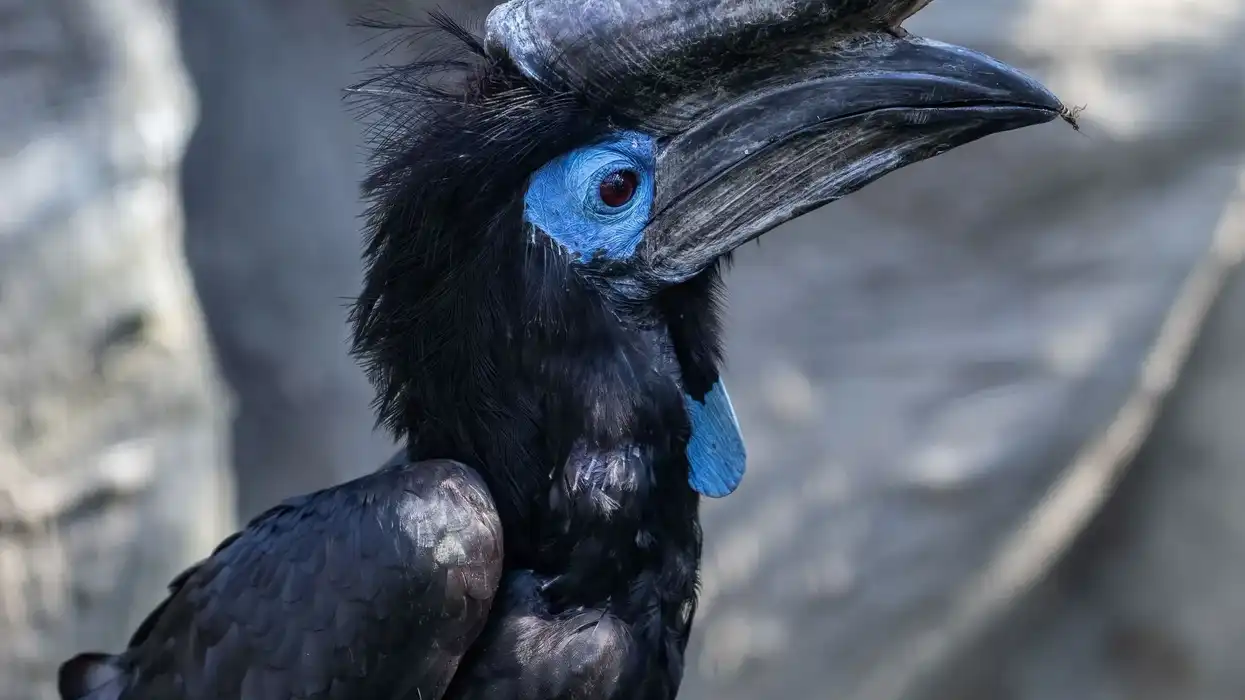There are three types of reedbucks namely the bohor reedbuck, southern reedbuck, and mountain reedbuck. This article will take an overview of all species of reedbuck.
The mountain reedbuck is predominantly gray color while the southern reedbuck has a lighter color and finally, the bohor reedbuck has a yellow to grayish brown color.
Apart from this, another difference is they are region-specific, i.e. the mountain reedbuck is seen in the Sub-Saharan Africa region, southern reedbucks in Tanzania and Gabon, and bohor reedbucks in multiple regions including the Democratic Republic of Congo and South Africa.
All are herbivores and feed predominantly on grass and other similar matter. They are nocturnal species and active mostly during dusk and dawn as compared to other times.
Their main predators include lions, leopards, and hyenas. They are classified as the least concern species however, such species population is often at the threat of hunting, poaching, and other illegal activities. For more relatable content, check out these reindeer facts and deer facts as well.
Reedbuck Interesting Facts
What type of animal is a reedbuck?
Reedbuck is a type of antelope species of animals and the phylum Chordata.
What class of animal does a reedbuck belong to?
Reedbucks belong to class Mammalia, of species family Bovidae and genus Redunca. All species of reedbuck have similar habits although they belong to different families. Habits including their dietary pattern, and habitat.
How many reedbucks are there in the world?
The total number of these bohor reedbucks (Redunca) is estimated to be around 100,000. They are mostly spotted in a group in regions of sub-Saharan Africa. The exact population of the other two species, the southern reedbuck (Redunca arundinum) is 33,000 and the mountain reedbuck (Redunca fulvorufula) is just 450.
Where does a reedbuck live?
Reedbucks live in the grassland range or near the savanna region. They are endemic species of sub-Saharan Africa and parts of South Africa as well.
Since their water consumption is low, they can survive in regions where water is scarce. They are seen grazing throughout the day to make up for their water deficiency. Grazing also helps them absorb all the nutrients they require.
What is a reedbuck's habitat?
A reedbuck's habitat is primarily in grasslands they don't prefer any others regions and are seen in most parts of Africa. They are active mostly during dusk and dawn within their range and rarely seen active during other times of the day. Their color helps them camouflage easily into the grassland range and stay alert from any predators.
Who do reedbucks live with?
Reedbucks live with other species of their own kind. They form small herds of three to eight females in their home ranges. Males separate into their own herds. Females form groups and the juveniles stay in the groups with their mothers until they are independent. The male has a horn which females lack.
How long does a reedbuck live?
The average lifespan of these species is estimated at 10 years. Some have been recorded to have lived for 14 years as well. Their eating and other habits are usually best observed around other members of their family when they travel in groups.
How do they reproduce?
Reproduction occurs commonly in all three species. Breeding season peaks in summer. By the average age of 15-16 months, female reedbucks give birth to their first lamb post the gestation period in the breeding season.
Males however reach sexual maturity only after two years. Mating occurs sexually. Breeding season can occur at any time of the year for the female southern reedbuck.
The female gestation period lasts seven to eight months. This gestation period is relatively long as compared to other animals.
The young lambs hide for up to three months and come out only during nursing which happens every day for ten to 30 minutes. During this time they are specifically vulnerable to attacks from predators as well. Males are relatively less involved in raising the young as compared to females.
What is their conservation status?
The reedbuck's population is classified as of Least Concern by the International Union For Conservation Of Nature (IUCN).
Reedbuck Fun Facts
What do reedbucks look like?

Reedbuck horns are a unique identifying feature in these animals which is on top of their head. Their head and other physical features are similar to deer species, but they are not the same.
The mountain reedbuck is predominantly grey color while the southern reedbuck has a lighter color and finally, the bohor reedbuck has a yellow to grayish brown color which is a good way to identify them apart from the regions they are native to.
They have a white underside. They have 32 teeth and dark-colored eyes and the region around the eyes is usually lighter. They have short a tail. Male's horns are sharp-looking and curve into a V shape followed by two cute ears, however, only males have these horns.
They do not have any spots of patterns on their body like other species of antelope. Bohor reedbucks can be easily observed during the dry season. Males and females can survive easily even in the dry season.
How cute are they?
Common reedbuck species are extremely cute to look at and are beautiful as well. They have a reddish-brown color overall. If you wish to see them you could visit a national park or a conservation center native to the species.
How do they communicate?
They are not particularly loud in behavior and they communicate only in instances of mating, during fights, and other such events. Males fight with each other prior to breeding season. They also remain motionless when they sense any threat and slowly move into areas where they can hide easily.
How big is a reedbuck?
The bohor reedbuck is 3.93 ft (1.2 m), the southern reedbuck is 4.92 ft (1.5 m) and the mountain reedbuck is 3.93 ft (1.2 m) in length.
How fast can a reedbuck run?
Reedbuck antelopes have extremely good speeds and can run fast without much difficulty. When they sense any sign of predators they tend to stand still and observe predators and slowly try to hide in cover areas to get away from the presence of the predator. This behavior is a fight response.
How much does a reedbuck weigh?
The reedbuck weight of males and females animals is 94.79-147.71 lb (43-67 kg) and 70.54-108.02 lb (32-49 kg) respectively. To be more specific bohor reedbucks weigh 97.003 lb (44 kg), southern reedbucks weigh 110.23 lb (58 kg), and mountain reedbucks weigh 63.9 lb (29 kg).
What are the male and female names of the species?
Male and female animals are not addressed differently. They can be distinguished on the basis of their outward appearance, namely males possess horns while females don't and they also differ in reproductive functions.
What would you call a baby reedbuck?
You would call a baby reedbuck a calg or a lamb.
What do they eat?
Their diet hardly consists of seeds or fruits. They are seen grazing on grasslands during dusk and dawn. They fall predators to lions, leopards, and hyenas, to whom they are a major source of food.
Are they dangerous?
They are not innately dangerous however males may attack if they sense any threat. Females tend to just move into secure zones, the moose is considered the most dangerous species of the deer family.
Would they make a good pet?
No, they are wild animals and best thrive in their natural habitat. It's illegal to own such species in regions like California hence it's best to see them in their natural habitat.
Bohor species of reedbuck can be observed best during the dry season. You could visit a national park or conservation center in any sub-Saharan region to see these unique and cute beings. It best to keep a safe distance while observing them as they don't like to be petted like other pet animals.
Did you know...
Their reproduction cycle continues year-round. The mothers nurse the young ones and they teach young lambs to survive in the wild. They are extremely small when born however, adults are medium-sized. Dominant males mark their territory and don't allow others to enter their territory.
Reedbucks are called 'ngaisulisho' in the language of the Massai people native to Kenya. They were named for the unique sounds they made when predators approached.
Are reedbucks endangered?
Mountain reedbucks are endangered but the souther and bohor reedbucks are not. Major influences in this status are hunting, poaching, and other illegal activities. Their habitat is also in most instances under threat owing to rapid urbanization leaving them with no food.
How did the reedbuck get its name?
Reed refers to a tall slender plant of the grass family which is what these species feed on and buck means usually means the male of a horned animal like the deer, reindeer, antelope, and others. A reedbuck referrs to as a medium-sized antelope that inhabits regions of Sub-Saharan African regions.
Mule deer and whitetail are species native to North America and moose the most aggressive of the lot are also seen in the United States and Canada. Have you ever come across any of these species.
what were your experiences? Share your experience with your friends and family.
Here at Kidadl, we have carefully created lots of interesting family-friendly animal facts for everyone to discover! Learn more about some other mammals including kudu, or key-deer.
You can even occupy yourself at home by coloring in one of our free printable bohor reedbuck coloring pages.









